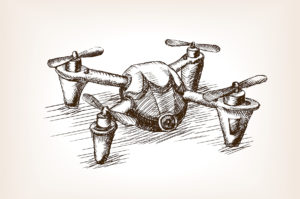The fundamental premise of Insurance is to be able to accurately assess the risk of financial loss associated with the given policy constraints. In the instance of drones, there are three key pillars that dictate risks – Human, Technology and Operations. Precision Autonomy’s Risk Management Framework separates these key pillars into individual metrics, which make up a complete picture of a given risk.
The fundamental premise of Insurance is to be able to accurately assess the risk of financial loss associated with the given policy constraints. In the instance of drones, there are three key pillars that dictate risks – Human, Technology and Operations. Precision Autonomy’s Risk Management Framework separates these key pillars into individual metrics, which make up a complete picture of a given risk.
This week, we dive into the Human element of risk assessment.
The Human Element in Drone Operations
The very purpose of the drone is to remove the human from the aircraft. Despite this, the pilot and surrounding human influence remains a vital component of drone safety, and in turn, a key contributor to accidents. The Human element in drone operations encompasses a broad range of factors, including individual nuances, the organisation and pilot skill to name a few, and each factor affects the risk profile of a given flight or operation differently.
For the sake of example, lets take two pilots:
- Mary, the singular pilot of the Drone Consulting Company.
- John, a single pilot who’s just completed his Remote Pilot’s Licence, and has just been hired as a pilot for the Mining Corporation.
Pilot Skill
Perhaps the most important determinant of Human risk is the level of competence of the pilot. This includes the level of experience, technical skill and many other factors.
Mary, our pilot, has over 1000 hours of flight time. In Flying for the Drone Consulting company, she’s had her licence for five years, flown in mines, over populous areas and near airports, sustaining only 1 accident in over 3000 flights.
John’s completed his Licence training, having conducted around 5 hours of flight time, mostly recreational. He’s never had a crash.
How do we assess this risk profile?
- Mary is assessed to rank higher than John for competence, as she has much more experience and knowledge about flying. She has demonstrated a high level of skill, as she’s not just flown recreationally, but also in a varied environment.
- Because Mary’s higher competence lowers the risk of crash, it should have a downward pressure on her price, relative to John’s rating.
Flight Planning
The act of flight planning includes an element of operational risk, as it has a real impact on the environment in which the flight is conducted. That being said, there remains the need to make decisions about flight path, drone usage and procedure, and planning for contingencies. For this reason, proper flight planning overlaps with operational risk and human risk.
As a part of her duties in the Drone Consulting Company, Mary does all the flight planning herself, mapping each flight in detail on a flight management software. To get to other jobs, she gives herself a small flight window, with a 5 step pre- & post-flight checklist, adhering to her Operations Manual most of the time.
John’s company, the Mining Corporation, places the utmost importance on compliance and routinely go above and beyond their Operations Manual with flight planning. They use the same flight management software as Mary, however they map out a minimum of 3 emergency landing spots, leave a 2 hour window either side of planned flight for weather and operational obstacles, and due to John’s inexperience, they have a spotter and a mentor who coaches him through his planned flight.
The assessment?
- Although Mary is much more experienced and has much more skill than John, her compliance practices are actually putting more pressure on her to perform.
- John’s company reduces the number of human decisions made during flight, reducing his risk of human error, relative to Mary.
Situational Awareness
Situational Awareness is the ability to assess the environment, and make rapid decisions when faced with high risk. This moves away from technical skill, and into cognition and decision making. While it is hard to assess, due to being subjective, it is too important not to understand.
Some examples of good situational awareness include:
- Spotting an eagle in the flight path and grounding the drone.
- Calling off an afternoon/evening flight due to high fatigue.
- Quickly changing the flight path of a failing drone to save it from falling on people/property
Mary, our pilot from the Drone Consulting Company, has proven over the course of her five years as a pilot, that she has highly developed situational awareness. Due to the sheer number and variety of over 3000 flights, she would have demonstrated it in some way, shape or form. Perhaps it was abandoning a flight due to incoming weather, putting off a client due to fatigue. Her sound track record, in conjunction with examples of high situational awareness, should result in a lower risk rating.
John, our pilot from the Mining Corporation, has not been able to prove that he has situational awareness, simply due to his lack of experience. Whilst he would not get a lower risk rating, through data collection and a good track record, he will be able to demonstrate, over time, that his situational awareness is high, resulting in a lower risk rating
What’s the upshot of the human element of risk of Drone Operations?
The upshot is that there are an almost endless number of human elements in drone operations that change risk. When creating a risk profile, Precision Autonomy’s Risk Management Framework assesses each individual factor, and weights it against the overall scheme of risk. Pilots and organisations who demonstrate low levels of risk are rewarded with a greater rating and over time, lower premiums.
Do you want to know more about our Risk Management Framework? Want to get a free quotation for Precision Autonomy’s pay-as-you fly Drone Insurance? Sign up today!



